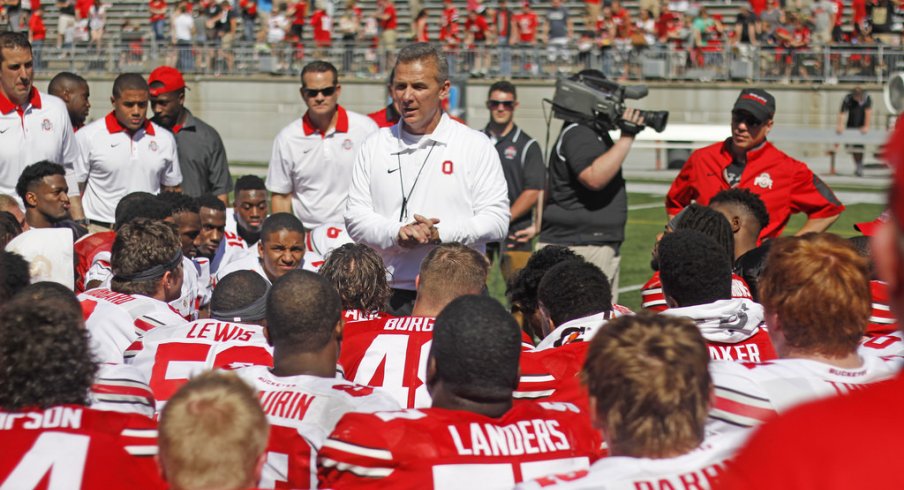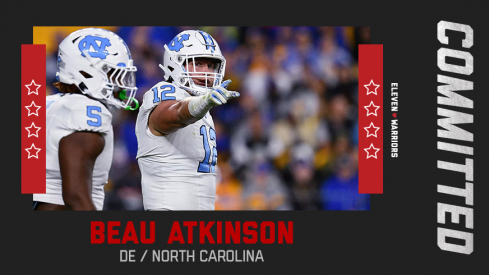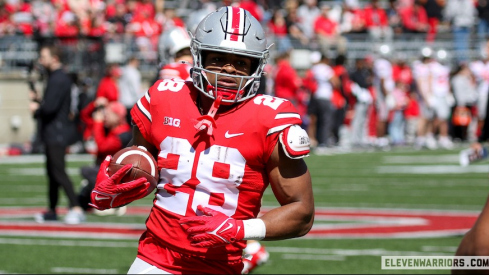Four years ago, when Urban Meyer was but a baby bird in the nest of sticks and twine that is Ohio State, Dennis Dodd (of all freaking people) asked a very prescient question to the then semi-new Ohio State head coach:
I asked Urban Meyer this week about the prospect of someone telling him how often his teams could hit during the week. The Big Ten and Ivy are partners in a head injury study.
“If it’s for the safety of the player and it’s scientifically proven I’d certainly listen,” Meyer said. “I am into that right now. I don’t think [the conference would] have to come to us.”
And he was true to his word! Kind of! I'll get back to that later, but for right now let's talk about why that 2013 Dennis Dodd moment of clarity was important for today.
Earlier this year, the NCAA issued guidelines to football programs which banned two-a-days, with the intent that teams have only one contact session per day during fall camp. Teams still have 29 days of practice to work with (which some might say is excessive in of itself), but there are some pretty strict rules governing when and how players may engage in contact with helmets and pads.
This was met with a kind of grudging acceptance from most college football coaches, including, improbably, Nick Saban. Saban gave the ol' "whatever, I don't really care" response to something that he knows he can't complain about without risking losing recruits, but his point about the season being too long is 10000 percent true so points to him.
Anyway, the NCAA's move in April to make the sport of college football just a wee less concussion-y came out only a few months ahead of a devastating CTE study that showed the brains of 110 out of 111 former NFL players had the disease, and out of the 202 brains from football players examined in total (including those who just played in college or high school), 87% showed signs of CTE.
It's significant that seemingly every time someone decides to conduct a study into the dangers of football, CTE and concussions shows up as an alarmingly big problem. It's even more significant that signs of CTE has begun to show up even in players who only played in high school, because that suggests that no amount of changes to equipment or technique can effectively mitigate the cumulative effect of years of one's brain and skull conducting inertia experiments on each other.
We'll grapple with the inevitability of things like universal high school flag football or the NFL selling all its assets and becoming a pretzel distribution service on another day; what's more interesting to me right now is the evolution of thinking in college football when it comes to practices, especially in fall camp, for the purposes of reducing injury. "Injury," of course, can mean everything from sprained ankles to torn ACLs to broken hands. But the unspoken fear of concussions looms large over every decision, and probably will until football ceases to be a sport.
For example, the Big 12 and the Pac-12 already had a limit on how much contact can occur in football practices throughout the year, even before the NCAA stepped in. Notably, the Big 12 conducted a study from 2013 through 2015 that showed that well over half of all concussions sustained occurred before the beginning of the season, and sought to try and reduce that as much as possible.
Last year though, the Ivy League blew everyone out of the water with a fairly radical idea that I'm positive didn't result in any armchair warriors talking about the wussificiation of America:
The Ivy League made a dramatic change last week when its coaches decided to eliminate full-contact hitting from regular-season practices, as first reported by The New York Times. It’s the most extraordinary step taken so far in college football to try to combat growing concerns of long-term brain injuries due to head trauma -- and it’s a smart move.
Jon Solomon- the writer of that article- was exactly right, not just in saying that the Ivy League made the right call here, but also in pointing out that it will eventually set the template for how all of the football world tries to get a handle on the overall violent nature of the sport and the consequences for players.
As the health effects of frequent hits on the practice field become undeniable, it's really just a question of how long it'll take for everyone else to catch up. The NCAA's ban on two contact practices in a day is fairly forward thinking... for them, and maybe for a decade ago. But the reality is that players and the public at large are quickly becoming wise to the idea that repeatedly having your brain get crushed against the inside of your skull might in fact be a bad thing, and the only real solution to avoid that is to, well, avoid that. Chalk one up for the nerds at Yale.
So let's go back to Urban Meyer. Meyer has said that he'd still like to have two-a-days, but without contact, which is a position that seems to be mostly drawn from a desire to not extend the already extremely long fall camp any longer than it has to be. And to his credit, Meyer has also shown an awareness of the potential for injury that a grueling preseason can inflict on players:
“They'll come in and do basically an extension of what we've been doing with the ball and get them out of there. No meetings before practice. They'll take it home on their iPads. I do not want to have these players come three weeks completely French-fried.”
With camp running near five weeks this year, the Buckeyes will keep an eye on injuries.
“We went back and looked at the third and fourth day of practice. That's when you get the hamstring [injury]. You're blowing it out,” Meyer said. “Our strength coach [Mickey Marotti] is over the top about it. He helped me put the schedule together. Go hard for two day, off for two days.”
Which is cool, but it's also not enough. What is required is a sea change in how we view the sport of football, and in that I will disagree with something Meyer said in that Dood interview way back in 2013: the conference absolutely has to come to the coaches to initiate this kind of change. It requires the authority of someone like Jim Delany to convince someone like (as a random example) Kirk Ferentz of the necessity of limiting contact in practice, because the conference has the ability to see and prepare for the long-term effects of inaction whereas individual coaches may only see an attempt to subvert their ability to win football games this season.
Clemson's Ben Boulware didn't come to the conclusion that he had to play through a concussion because "it was his job" and he "had to suck it up" on his own; it was reinforced through years of being told by coaches and teammates that that's simply how you play football. The question will be if more conference commissioners will risk losing a perceived competitive advantage to tell the coaches of players like him to not let it get to that point in the first place.
There are many, many, many more changes in store for football in the next 10 to 20 years. Purists may cringe at safety measures like limiting contact, but it says something that even maximum effort guys like Urban Meyer are starting to recognize the utility of keeping their players as healthy as possible for the regular season.
Oh, last thing: we're in on this too. Remember how angry we were in April when our precious Spring Game was utterly ruined by the presence of two hand touch? That if we were going to spend a beautiful spring Saturday in Ohio Stadium, we wanted to see some blood, dammit!
Guess it turns out that we all have to make sacrifices for player safety. But hey, football is eternal. Our brains are not.


